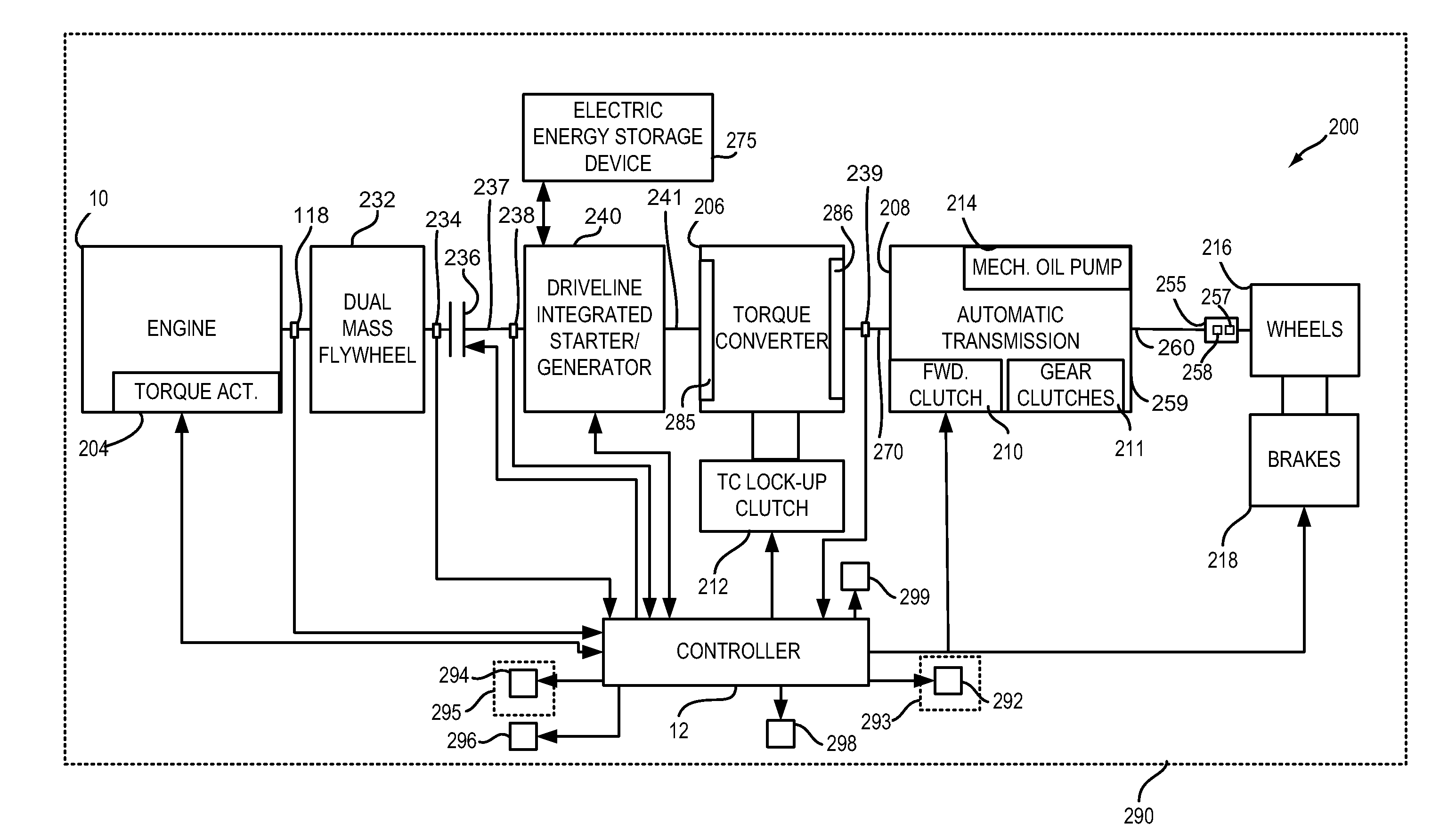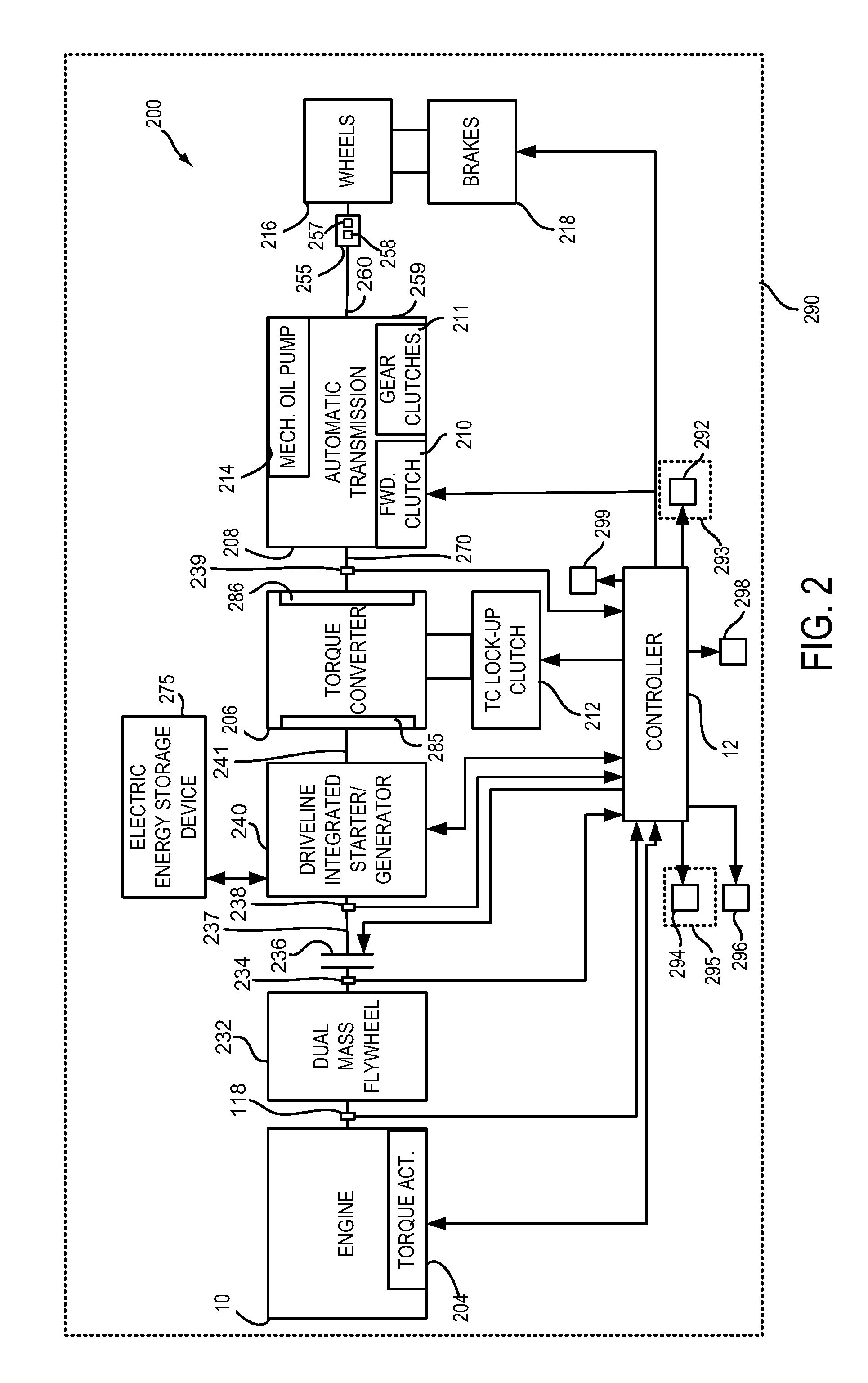Methods and systems for transitioning between braking modes
a technology of braking mode and braking system, which is applied in the direction of braking components, machines/engines, motor/generator/converter stoppers, etc., can solve the problems of not always being able to operate with regenerative braking, and the conversion of the vehicle's kinetic energy into heat, so as to reduce the driveline braking torque, increase the friction braking torque, and reduce the effect of driving line braking torqu
- Summary
- Abstract
- Description
- Claims
- Application Information
AI Technical Summary
Benefits of technology
Problems solved by technology
Method used
Image
Examples
Embodiment Construction
[0026]The present description is related to controlling a driveline of a hybrid vehicle. The hybrid vehicle may include an engine and electric machine as shown in FIGS. 1-3. The engine may be operated with or without a driveline integrated starter / generator (e.g., an electric machine or motor that may be abbreviated DISG) during vehicle operation. The driveline integrated starter / generator is integrated into the driveline on the same axis as the engine crankshaft and rotates whenever the torque converter impeller rotates. Further, the DISG may not be selectively engaged or disengaged with the driveline. Rather, the DISG is an integral part of the driveline. Further still, the DISG may be operated with or without operating the engine. The mass and inertia of the DISG remain with the driveline when the DISG is not operating to provide or absorb torque from the driveline.
[0027]The driveline may be operated according to the method of FIG. 4. In some examples, the driveline may be operat...
PUM
 Login to View More
Login to View More Abstract
Description
Claims
Application Information
 Login to View More
Login to View More - R&D
- Intellectual Property
- Life Sciences
- Materials
- Tech Scout
- Unparalleled Data Quality
- Higher Quality Content
- 60% Fewer Hallucinations
Browse by: Latest US Patents, China's latest patents, Technical Efficacy Thesaurus, Application Domain, Technology Topic, Popular Technical Reports.
© 2025 PatSnap. All rights reserved.Legal|Privacy policy|Modern Slavery Act Transparency Statement|Sitemap|About US| Contact US: help@patsnap.com



